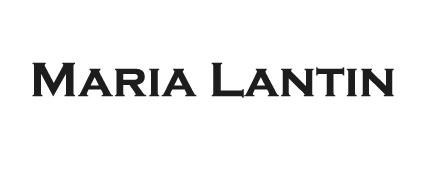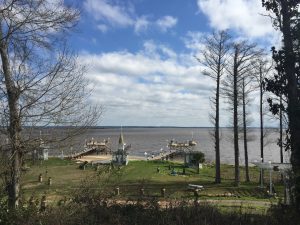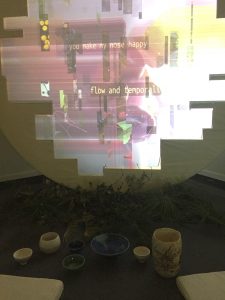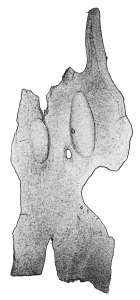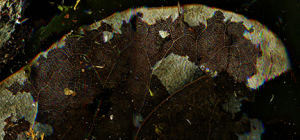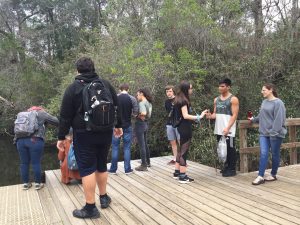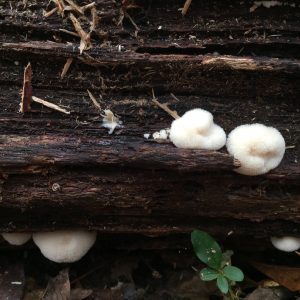Sound Flower Pickens
We started the day with a quick jaunt to Pensacola Beach and Fort Pickens via the Scenic Highway. This is something we had wanted to do during our stay but had never quite found the time. On our way there we spotted the miniature Taj Mahal that we had been told about. Somehow in our minds we pictured it bigger but still the earnest kitsch quality of it was beautiful.
The sand here is indeed as white as people had told us. Like snow really (and more on that later). We had thought that the Fort was built by the Spanish but in fact it was build by the US government and was used mostly to ward off confederates. We don’t know the full history of the Fort yet because it was super cold today and we were way too chilly to read all the panels.
We rushed back to the lab for noon because we had scheduled a bowl recording session with Noah and Anastasia. Noah was ready with a series of bowls that he had made and filled with water to achieve certain tones. We collected various implements to bang on the bowls and recorded them on their own, as a collective, and as a collective with the Epic Walk composition by Simon Overstall. All of it was recorded in Ambisonic format using the Rode 360 microphone. We listened to portions of it later on using headphones (binaural) and it was delightful. Definitely led to some ideas about interactivity and sound.
We couldn’t do a full walk today but decided that it might be nice if the progressive scan ended on a colourful note so we went out on campus and collected a variety of small flowers, among them some cherry blossoms just starting to bloom — a fitting last gift to circle us back to Vancouver. We decided to let the scanners go for as long as we could and to do another trip to Fort Pickens in the meantime.
The second time around we had a bit more time and it was slightly warmer so we strolled through the Fort batteries and made out way onto the beach, past the bird nesting grounds where we are told we should leave them alone because they need space to forage, loaf, and court. This seems to us like exactly the kind of values we should keep in mind for humans — let us all create new human habitats that optimize for foraging, loafing, and courting. Life would be better for all.
Coming back, we decided to keep driving along the spit but about a third of the way in we realized it would take us way too long to get back to the University to pack up our studio. We had to do a UTurn! No problem. We have lots of experience with those by now. But as it turns out, the sand here not only looks like snow but also behaves a little bit like snow. As we tried to edge Loblolly the car back onto the road from the sand-flanked shoulder, we heard the sound of spinning wheels. Stuck in the sand in Pensacola in a quite deserted stretch of road. Maria tried to push the car from both sides to no avail. A car passed and stopped! Sean (a local man) had some straps that he used to link our cars together and try to pull us out. But the force of the pull snapped the straps without any kind of progress for Loblolly. We were about to try again with a slightly different technique when Dave and Donna from Kentucky stopped with their large pickup truck. They had a chain and a hitch and were able to pull us out without any problem. Meeting our embarrassment at being stuck in the sand, they said “it happens”. We thought they were just being polite southerners but in fact, apparently it does happen regularly here. In any case, we were charmed by the super helpful people that stopped and never made us feel stupid about any of it. We have no photo documentation of this adventure unfortunately.
Back at the University we took a look at the last few snippets from the progressive scan and the Camellia scan and printed a couple with the laser printer and pasted them in the notebook. We regretfully stopped both scans and started to pack up everything, leaving little traces of our presence here and there as bouquets, still lives, and best-of vegetation. It has been a beautiful time here and we will miss the studio, the people, the walks, the bayou. More on the learnings on a later blog post.
